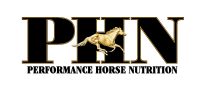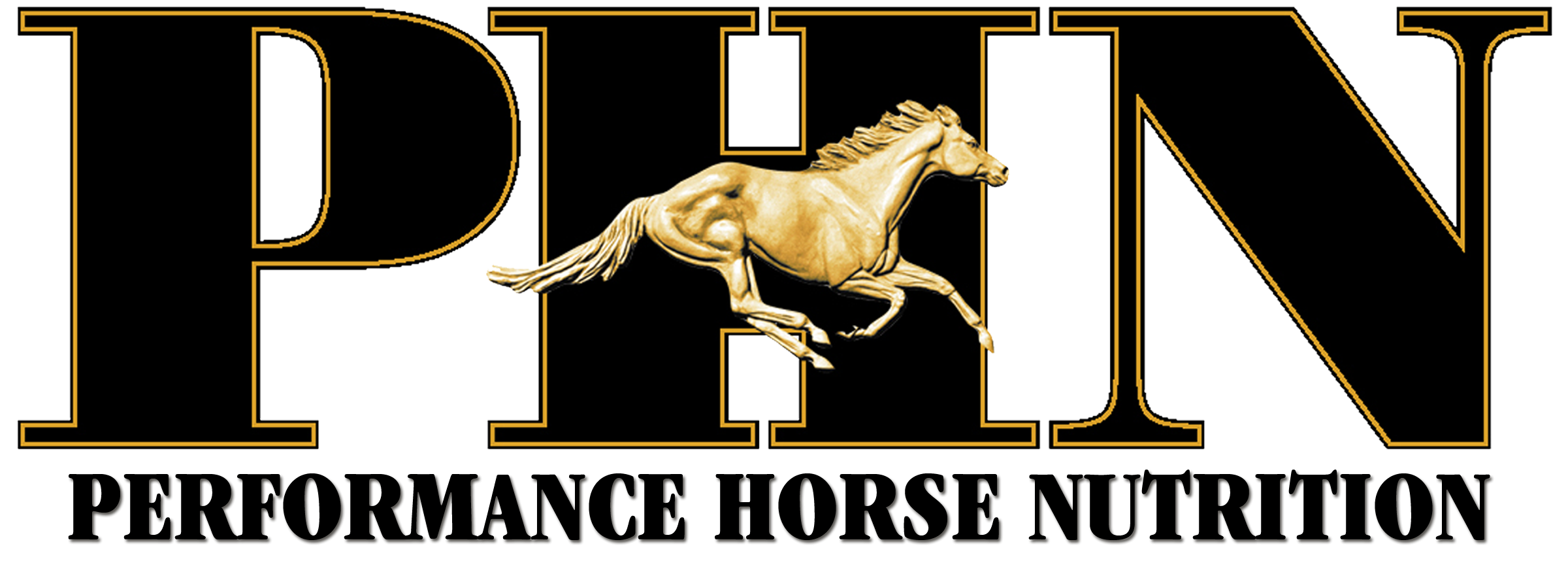UNDERSTANDING
POLYSACCHARIDE STORAGE MYOPATHY (PSSM)
September 2014

Written by Performance Horse Nutrition
What is it?
Polysaccharide storage myopathy is a muscle disease that occurs primarily in horses with Quarter Horse bloodlines such as Quarter Horses, Paint Horses and Appaloosas. Polysaccharide storage myopathy also occurs in other breeds including Drafts, Draft crossbreeds, and Warmbloods. The primary clinical sign of this disease is muscle cramping or tying-up; however, clinical signs may vary with different breeds and severity. There are several different abbreviations used to describe polysaccharide storage myopathy including PSSM, EPSM and EPSSM. Throughout this paper we will use PSSM. Tying-up also occurs in other breeds of horses such as Thoroughbreds and Standardbreds, but this form of tying-up has a different cause.
In normal tissue insulin drives glucose from the blood into muscle and liver cells to be stored as glycogen and later used as energy. Polysaccharide storage myopathy is a glycogen storage disorder and is characterized by the abnormal accumulation of the normal form of sugar stored in muscle (glycogen) as well as an abnormal form of sugar (polysaccharide) in muscle tissue. Muscle glycogen concentrations in affected horses are up to 4 times greater than in normal horses.
What are the symptoms?
Horses with PSSM typically have calm dispositions and are in good body condition. The clinical signs of a PSSM episode are typically associated with tying-up. These signs are most commonly muscle stiffness, sweating, and reluctance to move. The signs are most often seen in horses when they are put into initial training or after a lay-up period when they receive little active exercise. Episodes usually begin after very light exercise such as 10-20 minutes of walking and trotting. Horses with PSSM can exhibit symptoms without exercise.
During an episode, horses seem lazy, have a shifting lameness, tense up their abdomen, and develop tremors in their flank area. When horses stop moving they may stretch out as if to urinate. They are painful, stiff, sweat profusely, and have firm hard muscles, particularly over their hindquarters. Some horses will try pawing and rolling immediately after exercise. Most horses with PSSM have a history of numerous episodes of muscle stiffness at the beginning of training; however, mildly affected horses may have only one or two episodes/year.
Episodes of muscle pain and stiffness can be quite severe, resulting in a horse being unable to stand and being uncomfortable even when lying down. The urine in such horses is often coffee colored, due to muscle proteins being released into the bloodstream and passed into the urine. This is a serious situation, as it can damage the horse’s kidneys if they become dehydrated.
Very young foals with PSSM occasionally show signs of severe muscle pain and weakness. This occurs more often if they have a simultaneous infection such as pneumonia or diarrhea. Some weanlings and yearlings can develop muscle stiffness with daily activities and difficulty standing.
What are the causes of PSSM?
There are two forms of PSSM: Type 1 and Type 2. We know that both are the result of the abnormal accumulation of muscle glycogen which is the storage form of glucose in muscles.
Type 1 PSSM is caused by a mutation in the GYS1 gene. The cause of Type 2 PSSM has yet to be identified. Horses with Type 1 PSSM can be identified by genetic testing. Further, Type 1 PSSM is inherited from both mares and stallions. Horses with Type 2 PSSM lack the mutation that is specific for Type 1 PSSM. At present there is not a specific genetic test for type 2 PSSM and there is not conclusive evidence that it is inherited.
Management
Feeds that are high in starch, such as sweet feed, maize, wheat, oats, barley, and molasses, appear to facilitate the development of type 1 and type 2 PSSM. That is why these ingredients should be avoided for horses that have PSSM. Extra calories can be provided in the form of fat (oil) for performance horses that are prone to PSSM. An important part of the management of PSSM horses is daily exercise. This enhances glucose utilization, and improves energy metabolism in skeletal muscle. If only the diet is changed, researchers have found that approximately 50% of horses improve. If both diet and exercise are altered, then 90% of horses have no or few episodes of tying-up. An old theory about tying-up is that it is due to too much lactic acid in the muscle. Many exercise studies have proven that this is absolutely not the case with PSSM.
The unique feature of PSSM is that the muscle cells in PSSM horses remove sugar from the blood stream and transported into their muscle at a faster rate, and make more glycogen than normal horses. Recent research shows that the reason for this is that PSSM muscles are very sensitive to insulin beginning as early as 6 months of age. Insulin is a hormone released by the pancreas into the bloodstream in response to a carbohydrate meal. It stimulates the muscle to take up sugar from the bloodstream. Once inside the cell the muscles of PSSM horses make much more glycogen than a normal horse due to a mutated (overactive) enzyme called glycogen synthase.
There are several management strategies involving rest, exercise and nutrition that should be applied when treating horses with PSSM. For chronic cases, prolonged rest after an episode appears to be counterproductive and predisposes PSSM horses to further episodes of muscle pain. Horses should begin small paddock turn out as soon as reluctance to move has stopped. Daily exercise is critical for managing horses with PSSM. Even 10 min of exercise has been shown to be extremely valuable in reducing muscle damage. Once fit, some PSSM horses thrive with as little as 4 days of exercise as long as they receive daily turn out.
When designing a feeding program for horses with PSSM it is important to limit energy sources containing high starch ingredients such as sweet feed, corn, wheat, oats, barley, and molasses. High fat concentrates should be used as alternative energy sources in exercising horses. Since many horses with PSSM are easy keepers, the first dietary criterion is to remove high starch ingredients. If the horse requires additional calories to exercise and maintain weight then dietary fat (oil) or high fat feeds can be fed. If you immediately decrease starch and add fat without the horse needing the extra calories the horse will become obese and cause a whole new set of problems.
Supplementation with oral chromium (5 mg/day) has been reported to calm horses and improve their responses to exercise (e.g., lower peak concentrations of insulin, cortisol, and lactic acid). Chromium may assist glucose and glycogen metabolism, by potentiating or helping the action of insulin. The reported calming effect of chromium may be beneficial in Thoroughbreds or Standardbred horses with recurrent exertional rhabdomyolysis (tying-up) because it appears that stress is a critical precipitator of this disorder. However, PSSM horses display abnormal sensitivity to insulin, and chromium supplementation may not benefit these animals.
PSSM cannot be cured but it can be managed. When a proper diets and exercise routines are followed researchers found that all horses improved, and more than 75% of horses stopped tying-up. PSSM horses, however, will always be predisposed to this condition if their diet or exercise schedule is disrupted.
-Dr. Stephen Duren & Dr. Tania Cubitt

